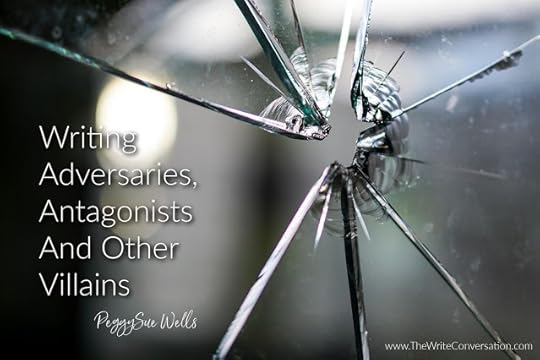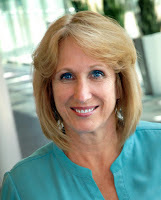Writing Adversaries, Antagonists And Other Villains

by PeggySue Wells @PeggySueWells
“Contains one of the best well-rounded villains I have read in a long time,” reviewed Joseph Dyer about my book, The Patent.
This remains one of my favorite reviews because this reader recognized the multi-dimensions of the antagonist.
Story consists of three elementsA character we care aboutThe character’s great needA great obstacle between the character we care about and their great need.Frequently, the great obstacle is the antagonist, who can also be referred to as adversary, competitor, enemy, opponent, rival, or villain. Memorable antagonists includeClaudius in HamletDarth Vader in Star WarsFernand Mondego in Count of Monte CristoProfessor James Moriarty in Sherlock HolmesSheriff of Nottingham in Robin HoodVoldemort in Harry PotterAt its core, character is the organization and structure of a person’s character or personality. Stories commonly feature a character line-up including protagonist, sidekick, antagonist, and mentor. In the same way a protagonist has flaws and weaknesses, an antagonist is not all bad.
Protagonists and Super Heroes have flaws and weakness. In his youthful immaturity, Thor lost his father’s trust. When possible, entwine the hero with the antagonist. Thor is at war with his brother. In the same way the protagonist is not perfect, neither is an antagonist all bad. We kinda like Loki, at least as played by Tom Hiddleston.
Well-developed antagonists have a backstory. Once we realize the Wizard of Oz is as lost as Dorothy, we have insight into the motivation that drives his actions. In my novel, The Patent, Colonel Jai Yao is motivated by a desire to improve life for his countrymen. While we see Yao threaten our hero, we are also privy to the choices he made to provide care for his frail parents. Like Javert in Les Miserables, Yao didn’t set out to be evil on purpose. In the end, the reader and Yao are certain that even good motivations are no excuse for becoming a monster.
Story is conflict, and conflict is multi-dimensional. In addition to the friction between the hero and the antagonist, both characters are challenged by the tensions within their own personalities. In Beauty and the Beast, the Beast begins as the dangerous antagonist and transforms into Belle’s happily ever after. That transformation is believable because the reader learns the reasons behind his circumstances and has sympathy for this character who is misunderstood, misjudged, and in a scenario he brought on himself through the common human traits of selfishness and pride.
Similarly, the Grinch begins as the evil protagonist of his own story, and experiences a character arc that ends with his transformation into a good character. Occasionally, as with Alex and A Clockwork Orange, the evil protagonist remains unredeemed. Antagonists can be human or inanimate including prejudice in Pride and Prejudiceweather in Chasing Sunrisemedical in WonderSuspense grows when the antagonist is a worthy opponent, and the opponent is worthy when we believe there is a good chance the protagonist will lose. For instance, in The Sound of Music, the German officer, backed by Hitler, is a worthy opponent to the Von Trapp family.Herod’s cruelty made him a frightening opponent for Mary, Joseph, and baby Jesus.The British Empire proved to be a mighty opponent during the Revolution as George Washington’s rag tag soldiers fought for liberty.Captain America fought Captain America— “I can do this all day.” —when he went back in time to face himself in a desperate attempt to reverse the Thanos snap.In Moby Dick, the adversarial great white whale does win in the end. Or is Captain Ahab the real villain in the story?
The clash between two opposing forces creates the narrative thread that spins into story. When two characters want the same single item, there can be only one Super Bowl trophy in the yearly play offhusband for Belle in Beauty and the Beastone throne to rule the kingdom in Game of Thrones one ring of power in Lord of the Ringsone owner of the litter of puppies 101 DalmatiansAntagonists that vie against our character we care about can look likeself: In Jack London’s Call of the Wild, the hero wrestles himself for transformationGod: Jonah attempts to weasel away from God’s instructionsdestiny: They Both Die at the End lets readers know the destiny of each charactercharacter: Three Musketeers versus evil monarchs environment: Santiago in The Old Man and the Seasociety or culture: Hester Prynne in Scarlet Lettermachine: 2001 A Space Odyssey pits characters against the artificial intelligence, HALsituation or circumstance: A schoolmaster develops a horse into the foundation of the Morgan breed in Justin Morgan Had A Horsethe unknown: Ender’s Game is leaders taking action without clear understanding of what they faceAs you create an antagonist for your story, consider these questions.
What motivates the antagonist?
What is your antagonist most afraid of?
In what ways is your antagonist misjudged and misunderstood?
How does your antagonist bring out the best in your hero?
How does your antagonist bring out the worst in your hero?
How is your protagonist and antagonist connected?
What’s the worst that can happen to the antagonist?
TWEETABLEWriting Adversaries, Antagonists And Other Villains, tips from @PeggySueWells on @EdieMelson (Click to Tweet)
 Tropical island votary and history buff, PeggySue Wells parasails, skydives, snorkels, scuba dives, and has taken (but not passed) pilot training. Writing from the 100-Acre Wood in Indiana, Wells is the bestselling author of thirty books including The Slave Across the Street, Slavery in the Land of the Free, Bonding With Your Child Through Boundaries, Homeless for the Holidays, Chasing Sunrise, and The Ten Best Decisions A Single Mom Can Make. Founder of SingleMomCircle.com, PeggySue is named for the Buddy Holly song with the great drumbeat. At school author visits, she teaches students the secrets to writing and speaks at events and conferences. Connect with her at www.PeggySueWells.com, on Facebook at PeggySue Wells, and LinkedIn at linkedin.com/in/peggysuewells
Tropical island votary and history buff, PeggySue Wells parasails, skydives, snorkels, scuba dives, and has taken (but not passed) pilot training. Writing from the 100-Acre Wood in Indiana, Wells is the bestselling author of thirty books including The Slave Across the Street, Slavery in the Land of the Free, Bonding With Your Child Through Boundaries, Homeless for the Holidays, Chasing Sunrise, and The Ten Best Decisions A Single Mom Can Make. Founder of SingleMomCircle.com, PeggySue is named for the Buddy Holly song with the great drumbeat. At school author visits, she teaches students the secrets to writing and speaks at events and conferences. Connect with her at www.PeggySueWells.com, on Facebook at PeggySue Wells, and LinkedIn at linkedin.com/in/peggysuewells
Published on May 02, 2022 22:00
No comments have been added yet.



